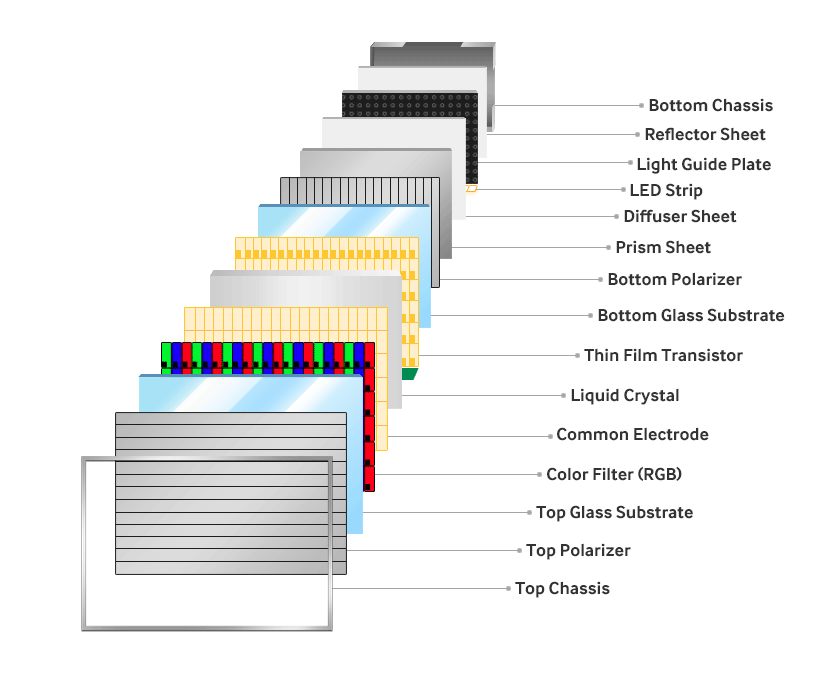Department of Rearch & Development | 22 SEP 2023 | Werner
In terms of the principle of light emission, LCD TVs are composed of a light source and a TFT-LCD panel. The panel itself neither glow nor present any color. Therefore, it must work with the backlight which can provide the brightness that brings the color to the viewer. When the picture of the panel changes and the backlight beam on it, we can see a dynamic and bright picture.
Key point: The LCD panel itself does not emit light. In order to present images on the panel, it has to be illuminated, and what illuminates the LCD panel is the backlight.
CCFL (Cold Cathode Fluorescent Lamp)
It was an intimate partner in LCD’s early days, and their marriage lasted until around 2010. The light emitting principle of CCFL: Applies electric field on a cold cathode lamp tube which filled with inert gas. When the electric field excites the mercury vapor in the gas, the mercury vapor will emit ultraviolet light. Since the human eye cannot see ultraviolet light, the cold cathode lamp tube will be covered with a fluorescent layer, and the fluorescent layer will produce visible light when it is impacted by high-energy ultraviolet light.
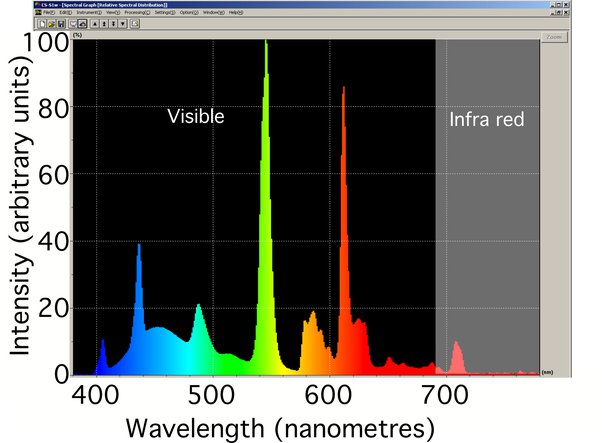
The early generation of LCD TVs usually have a dozen CCFL lamps, and high-end LCD TVs have the largest number of lamps, so the power consumption will be relatively high. In addition, the lifespan of CCFL backlight TVs is not very long. Generally, a CCFL TVs will turn dark and yellow after 50,000 to 60,000 hours of use. Regarding the spectrum characteristics of CCFL, its blue light intensity is relatively low which is close to red light. The highest intensity is generally green light, so many people think that it is more eye-friendly.
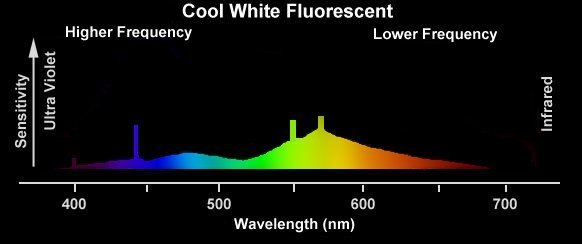
However, CCFL backlight still has obvious disadvantages. The first one is the high-power consumption and high heat generation. The second one is its thickness. CCFL could not shrink its size to meet the consumers’ demand for slimmer displays. More importantly, CCFLs contain mercury which is a toxic substance that aroused pressure from environmental protection authorities and the public.
Therefore, LED gradually took the place of CCFL and dominate the market till now.
The LED era
Compared with CCFL, LED is smaller and more energy-efficient, so manufacturers can create thinner TVs. In addition, the life of LED backlight is longer than that of CCFL. LEDs made from different materials can emit light of different wavelengths. LED backlights can be divided into WLED, RGB LED, GB-r-LED and RB-g-LED by different LED chips and fluorescent materials.
① WLED (White LED):
The mainstream ones on the market are blue LEDs.
When the blue pump LED die emits the blue light, one part of blue light will induce the yellow fluorescent powder to generate the yellowish green light, and the other part of blue light will travel through the fluorescent powder layer and mix with the yellowish green light to yield the white light.
This is how WLED works, and it is the most popular option for manufacturers, because of simple structure, low cost and high technical maturity.
However, since LED itself emits blue light, in terms of spectrum, the blue light level of WLED displays is much higher than that of red and green. Generally, the color gamut of TVs with WLED backlights is not too outstanding.
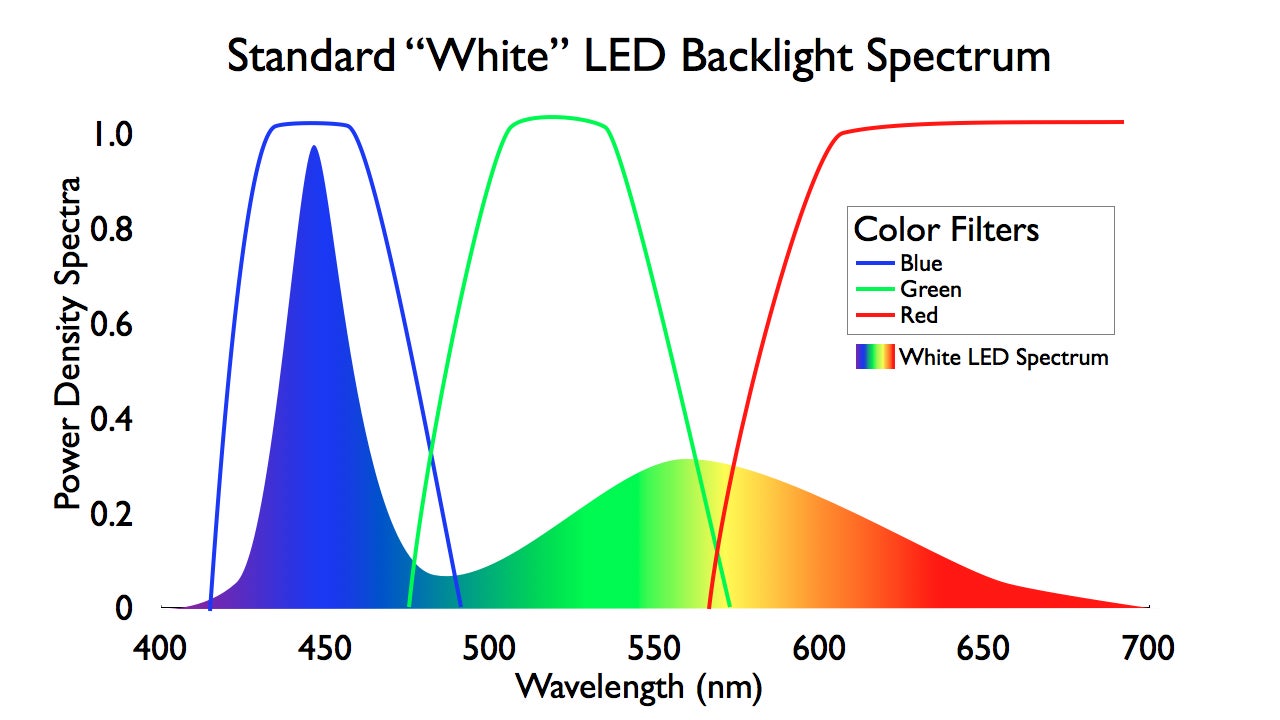
Since excess blue light can be harmful to the eyes, many monitor and TV manufacturers will add various blue light filtering functions to their WLED displays. This is why many manufacturers will promote blue light filtering, because WLED backlights are widely used in TVs and monitors.
Blue light can indeed damage the eye’s retina while disturbing our biological and sleep rhythms but only if the wavelengths are below 455 nanometers and the intensity is quite high.
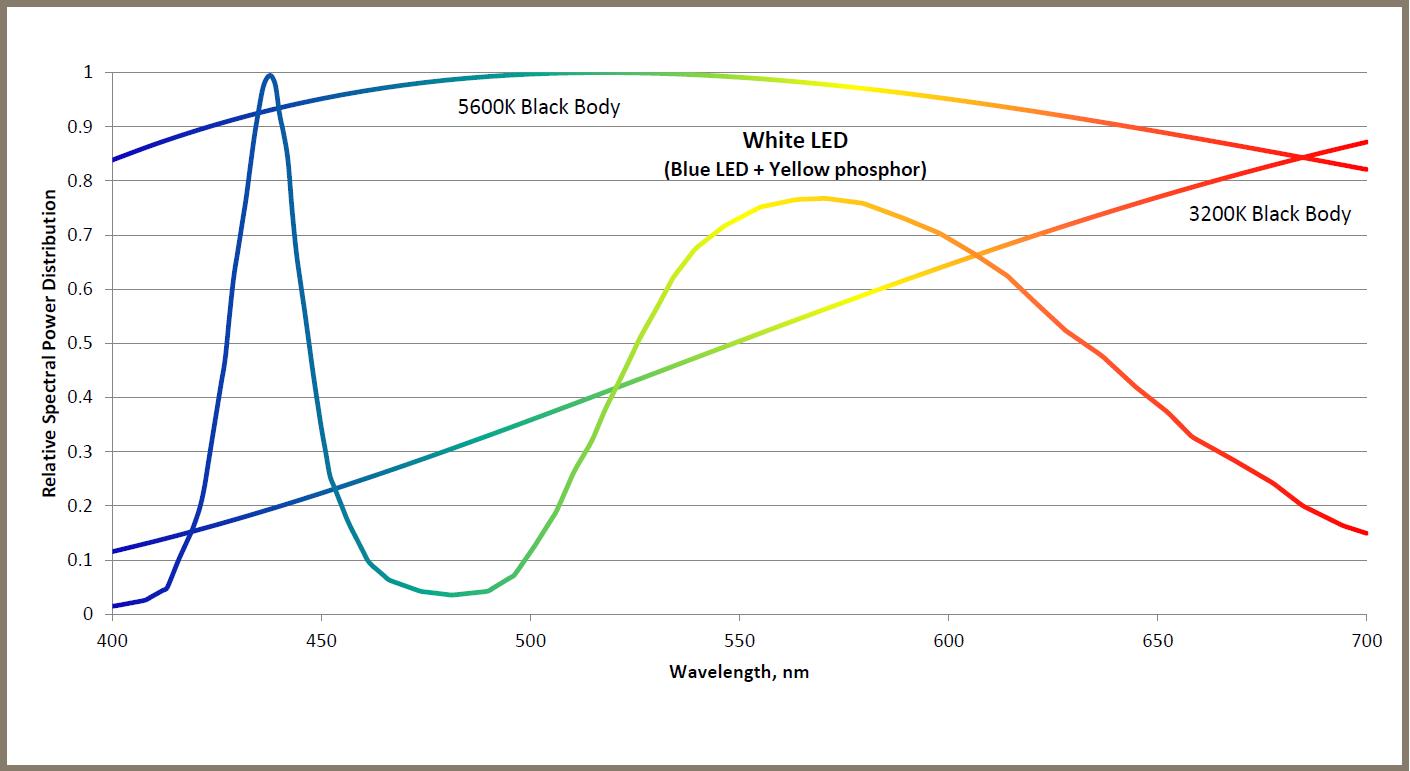
We can see it clearly in Figure 5 that the narrow blue spike centered at 440 nm from the blue pump LED die. It illustrates how important to add blue light filter to prevent potential risks for human eyes.
② KSF LED: The magical costume for WLED
Although the color gamut of WLED is not good, it is the most cost-effective choice for display backlight. is it possible to improve WLED to have a high color gamut? This is how KSF WLED has been developed. It is indeed an improved version of WLED, because it also uses blue LED with a layer of phosphor, but this layer of phosphor has been improved by the manufacturer.
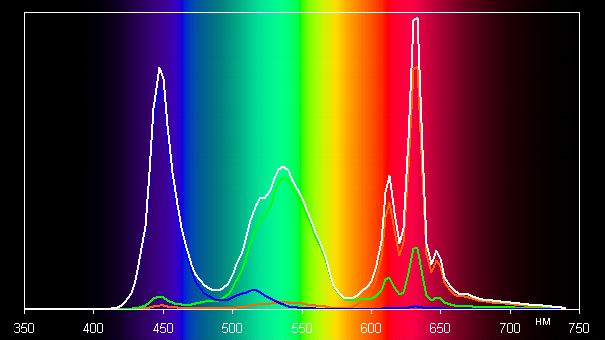
Take LG, the giant of flat-panel-display maker, as an example. Their NANO IPS panels use special backlights. In order to generate the ideal white light, the high-brightness blue pump LED dies (460~490 nm) will be packaged in transparent colloid, epoxy or silicone, mixed with fluoride phosphor powder which is called K2SiF6:Mn4. It allows the screen to reach 95% of the DCI-P3 color gamut.
③ RGB LED: The pure colors with nobleness
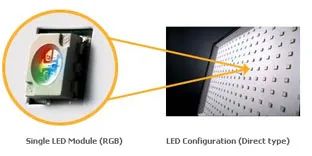
This is the backlight solution that is hard to find nowadays. The difference between RGB LED and WLED is that the latter uses a narrow wavelength monochromatic light–blue light as the initial light source, while the former uses three-wavelength light (red, blue and green) to yield the white light. For RGB LED, there is no need to filter out the different colors through a filter. Therefore, in theory, the color will be purer and the color gamut will be wider, even surpassing high-end CCFL backlight displays.
RGB LED backlights used to be assembled with professional-level monitors, such as HP’s LP2480zx, Samsung’s XL20. Because their costs are very high and the luminance attenuation of pump LED dies in different colors varies, now they have basically out of the market.
④ GB-r LED/RB-g LED: The entourage of pure-blooded RGB
Although RGB LED backlights are expensive, their super-wide color gamut is necessary for professional users. Therefore, some manufacturers are also racking their brains to find a backlight solution that saves some cost but still retains most of the advantages of RGB LED, and that is GB-r LED and RB-g LED. Both backlights are variants of RGB LED. They replace the red LED dies and green LED dies in RGB LED with red and green phosphors, thereby achieving the goal of reducing costs. Theoretically, they can indeed approach the spectral level of RGB LED.
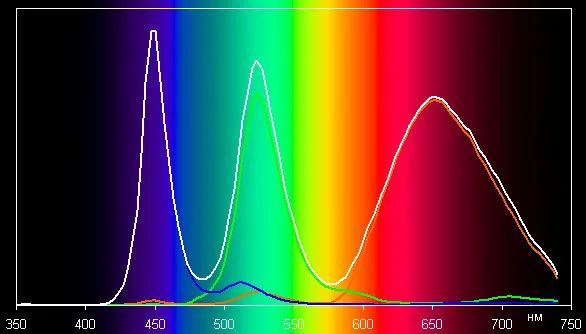
Take BenQ’s PG2401PT monitor as an example. The irradiance (intensity) of green light in its spectrum is close to that of blue light, and the irradiance of red light is also much higher than that of ordinary WLEDs. Its drawback is that the range of red light is too wide.
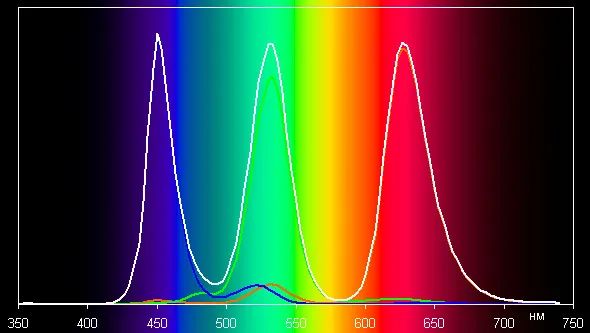
The RB-g LED is even better. Taking BenQ’s SW2700PT monitor as an example, the irradiance of red and green light is basically the same in the spectrum, almost achieving a perfect RGB form. It’s almost the pure RGB colors.
However, TVs or monitors with either GB-r LED or RB-g LED backlight are scarcely to see, at least in the mainstream consumer market.

